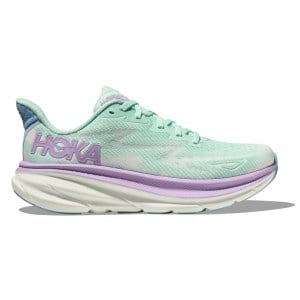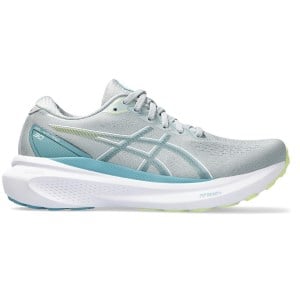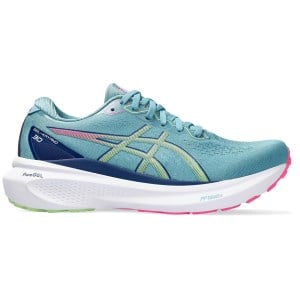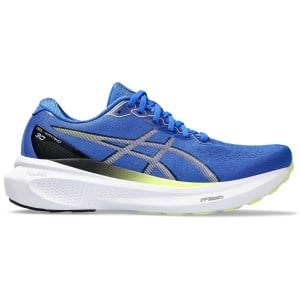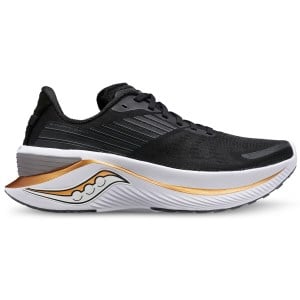A Runner's Guide: What Is Shoe Drop & Stack Height?
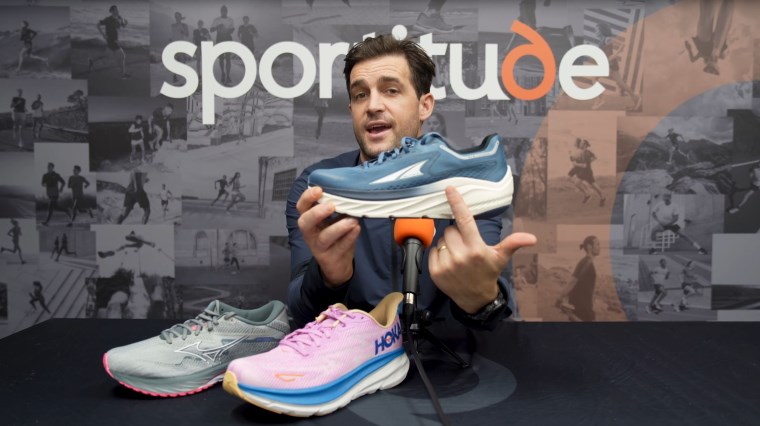
You may have heard the terms stack height or shoe drop (also known as heel-to-toe drop or offset) – but what does this data actually mean for your running shoes, and even more importantly, for your running experience?
Sportitude Running’s shoe expert Josh Willoughby does a break down of this terminology so you can know your running shoes better. He shares with you his insight on how this objective running shoe data is measured and takes a deep dive into what this running lingo means for your experience on the road or trail.
Shoe stack height and heel-to-toe drop has a dramatic influence on the feel of your running shoes – including your connection to your running surface and the shoe’s cushioning characteristics. Running shoe brands can tweak this data to fine-tune the balance of stability, protection and responsiveness in your running shoes.
The stack height and heel-to-toe drop must work in harmony with the running shoe's geometry, the density of the midsole foam and the shoe's overall purpose - from daily training and long runs to speedwork or racing.
Stack height and heel-to-toe drop not only allow brands to set running shoes up on a platform that’s fitting for their function – whether minimalist or max stacked - but allows them to personalise the experience of a running shoe to different runner’s preferences.
With knowledge of stack height and heel-to-toe drop comes the power to make informed decisions in your running shoe selection – not only to support the health of your feet, but to find the feel you’re hoping to achieve out of your footwear.
Check out the full video with transcript below.
Hey guys, Josh here from Sportitude Running. Today we're going to be talking all things stack height and venture out and discuss heel-to-toe drop. To understand heel-to-toe drop, you need to understand stack height. You would have heard both of those two terminologies thrown around the running scene.
They’re technical terms that we use to categorise shoes within the marketplace, but to understand how they all work and what their importance is, you need to understand the relevance of the terminologies themselves.
In today's discussion we'll take a deep dive into that, talk about the midsole densities and what happens within midsoles, and give you all the information that you need at home to understand this technical terminology better. Let's get stuck in.
How is stack height measured?
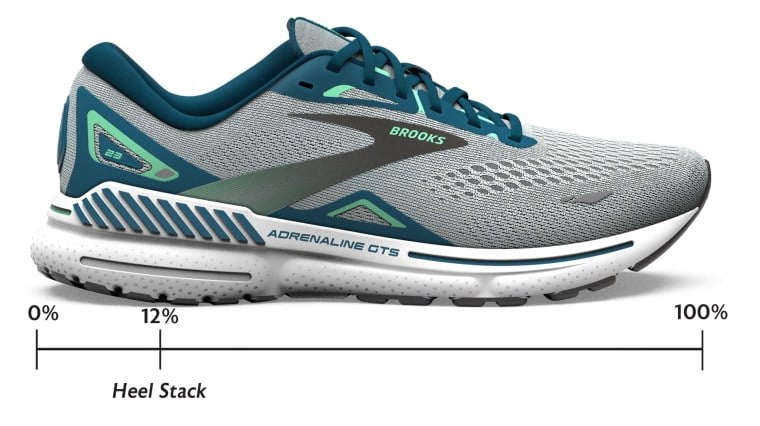
Stack height is the measurement of the maximum height of the midsole of a running shoe.
Running brands take this measurement 12% into the running shoe, with 0% being the heel of the shoe, and 100% being the front of the shoe (demonstrated with the Brooks Adrenaline GTS 23 in the image above).
From this central point of the heel they measure the amount of foam which compresses down underneath the foot.
In the case of the Brooks Adrenaline GTS 23, the stack height/heel height is 24mm - measured at the 12% point into the running shoe.
How is heel-to-toe drop measured?
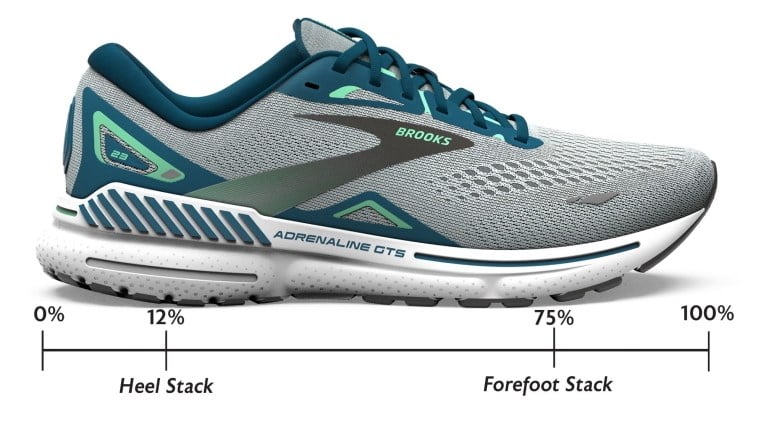
Heel-to-toe drop is the difference in height between the stack height measurement taken at the back of the running shoe at the heel, and the measurement taken at the front of the running shoe at the forefoot.
As we touched on previously, we measure the stack height 12% into the running shoe, starting from the back or heel. Alternatively, the forefoot height is measured 75% from the heel, in the front half of the running shoe (demonstrated with the Brooks Adrenaline GTS 23 in the image above).
There are some elements of variance in how brands measure this stack height and shoe drop, but most of the time they try to stick within World Athletics guidelines with reference to where it's exactly measured.
In the case of the Brooks Adrenaline GTS 23, the stack height is 24mm (measured at the 12% point of the shoe at the heel) and the forefoot height is 12mm (measured at the 75% point of the shoe at the forefoot).
Subtracting the forefoot height from the stack height/heel height allows us to determine the heel-to-toe drop. For the Brooks Adrenaline GTS 23, the heel-to-toe drop is 12mm (24mm stack height - 12mm forefoot height = 12mm heel-to-toe drop).
The heel-to-toe drop gives us an idea of the ramp angle or slope of the running shoe from heel-to-toe.
Other examples of stack heights & heel-to-toe drop
Hoka Clifton 9 running shoes
The Hoka Clifton 9 running shoes in the men's model has a 32mm heel height and 27mm forefoot height for an shoe offset or heel-to-toe drop of 5mm. The women’s model features a 29mm heel height and 24mm forefoot height for that variance of 5mm.
Altra Olympus 5 trail running shoes
The Altra Olympus 5 is a zero drop shoe, with a 33mm heel height and 33mm forefoot height for a 0mm heel-to-toe drop. At the heel it's exactly the same height as the forefoot. However, the wall of the running shoe comes up quite a lot higher in the back of the shoe. That can be visually deceptive, but it is important to know that it's the internal measurement which is where the stack height is taken at the back of the running shoe.
Why is stack height and heel-to-toe drop important?
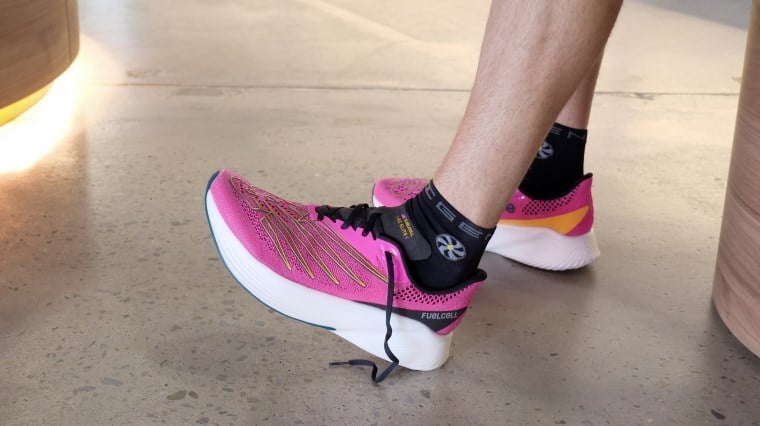
The stack height and heel-to-toe drop are objective measurements for us to be able to categorise shoes for you the running community.
It's another objective measurement for us to put the right shoe on your foot, alongside the geometry of foam or running shoe categories such as posted/stability running shoes, stable neutral running shoes or neutral running shoes.
We have this conversation every single day with every single person who comes through to get fitted at Sportitude Running.
With reference to the heel-to-toe drop we need to understand:
- What heel-to-toe drop the runner is coming from
- What surface are they running on or intending to run on
- What running shoe they have used previously
These factors will give us an understanding of what tolerance they can take regarding heel-to-toe drop.
Going back a decade, we would see most mileage running shoes had a heel-to-toe drop of about 8mm right up to 12mm. That was where 90% of running shoes were presented to the market and that's from all brands.
Nike, Brooks, New Balance, you name it, most running shoe brands have played within that window. Now we've seen that window being stretched out.
The biggest discussion point for us is understanding what happens on the Z-axis of the running shoe. The Z-axis refers to the transition from heel-to-toe on foot strike for the runner.
If a running shoe has a 5mm heel-to-toe drop and it’s on a high stack with a very soft geometry of foam, that running shoe will feel like it’s running on a lower platform.
That’s where it’s important to consider:
- The weight of the runner
- Where the runner first makes contact with the ground (forefoot, midfoot or heel)
If you're landing heel first, you'll generally sink in a lot more into the heel. If you're a midfoot or forefoot runner, generally speaking you'll have a lower first initial point of contact with the ground in reference to shock metrics - the impact force coming through your body.
The horizontal force is the amount of force which is applied on contact when you decelerate through your midstance phase. That's terminology we use downstairs in the RunDNA rooms at Sportitude Running at Hindmarsh.
Your RunDNA: Running Gait Analysis
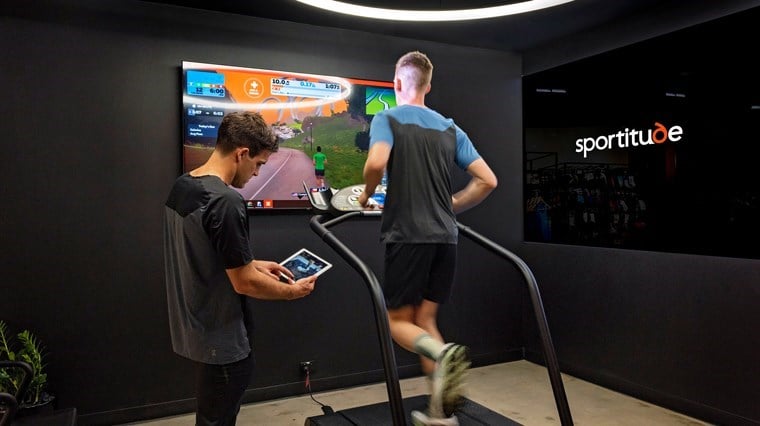
In our RunDNA shoe fitting rooms, our Sportitude running shoe experts use RunScribe pods to measure key accelerometer points regarding the impact and braking forces acting on your body.
We also measure pronation velocity, and a lot of that has to do with the amount of stack height on offer from a running shoe brand and how the runner reacts to that stack height and the heel-to-toe drop.
They’re all very important technical terms, but they’re vitally important to understand:
- Why brands have variances regarding heel-to-toe offsets
- What densities of foam they’re using
- And now more so than ever, what materials are they using in the midsole
Are they using carbon plates? Are they using a combination of carbon and nylon? Are they using carbon rods?
There is a lot of ingredients that goes into the midsole which will determine what the appropriate heel-to-toe drop is for a running shoe.
Prototype Shoe Testing at Sportitude Running
At Sportitude Running, we are very lucky that we have participated in prototype testing for brands over the last 10 years. A number of our Sportitude team downstairs and I are given prototype 1 and prototype 2 from a lot of brands.
Brands will play around with the stack height and the heel-to-toe offset to understand what the outcome of comfort and performance is for the runner.
For us, it's great to be involved in that testing phase throughout the prototyping. It also gives us a great understanding of the progressive thoughts of brands around engineering and advancing their midsoles into the future.
There are changes within brands regarding stack height, but it's the softness of the foam and how your body reacts to that which is the most important part of how you'll perform on that Z-axis.
The softer the running shoe, the more you sink into it. The firmer the running shoe, the more you stay on top of that midsole.
When doesn’t stack height & heel-to-toe drop matter?
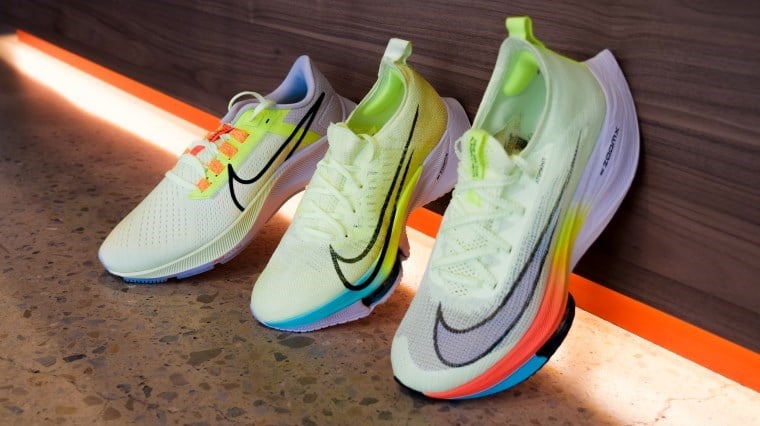
When doesn't stack height and heel-to-toe drop matter? I say that tongue-in-cheek because it’s a vitally important part of the overall shoe make-up and it does matter, but when doesn't it become a vitally important piece of information?
Racing shoes
There is limitations of what brands can do to make racing shoes legal. They have to play under the 40mm stack height. With racing shoes we are throwing a lot of overall support out the window because they are incredibly light.
There's a lot of instability inside racing shoes but it's all about comfort, speed and performance – taking into account ground contact time and also the acceleration point out of your gait cycle.
About 8 years before we saw carbon plated running shoes come into play, brands were lowering the heel-to-toe drop and the stack height to get more ground reaction force. They weren't making it overcomplicated with the amount of foam between the base of your foot and the ground. This means you could naturally get that responsive kick and feel just with the force you would be putting through the midsole.
Fast track 8 years to where we are today, 2023 stack heights are becoming higher but with regulations being under 40mm. However, we can see that brands are playing around with the softness of foams, none more so then Nike which is probably the market leader in this space.
The Nike ZoomX midsole is an extremely soft compound of foam. Therefore, you can compress through the midsole and engage that carbon plate to get a propulsive feel.
Why isn't stack height and heel-to-toe drop important in that discussion? It’s more about performance, comfort and achieving speed of acceleration throughout your gait cycle. Whether that's in a 38mm stack, a 40mm stack or a 36mm stack, it really doesn't matter for that athlete specifically.
We sometimes consider how far they’re running and where they're putting their performance shoe – is it being worn for a 10K race, half marathon or marathon? That's when we might entertain that stack height conversation, but more or less it's more about performance.
Stability running shoes for overpronators
The other leading factor relates to arch support or GuideRails for mild overpronators. Brands are slightly altering how we measure the outcome of success for managing overpronation. Instead of using dual density foams in the medial side, we're seeing brands like Brooks using GuideRails or what Asics have achieved, changing that density pod through the medial side in the new Asics Gel Kayano 30.
Brands are looking at velocity of movement from your contact point to your midstance phase. A lot of that is to do with the softness of foam and it’s a little bit to do with the heel-to-toe drop. However, with new technologies this isn't as much of a factor as it used to be in years gone by.
-
Asics Gel Kayano 30 - Womens Running Shoes
-
Asics Gel Kayano 30 - Womens Running Shoes
-
Asics Gel Kayano 30 - Mens Running Shoes
Rocker running shoes
There is obviously an element of importance in heel-to-toe drop, but there are some categories in which we don't overly take it too seriously like rocker shoes - being your Hoka Bondi and your Saucony Endorphin Shift just to name a couple. The heel-to-toe offset does play an important role, but it's not vital.
Whether it's a 4mm, 5mm or 6mm heel-to-toe offset, it's more around how we engage that forefoot to roll out of your gait cycle, not necessarily the difference between the heel-to-toe drop in those running shoes.
The Wrap Up
Thank you for tuning in to this conversation about stack height and heel-to-toe drop. We have done more of a deeper dive into three specific categories of heel-to-toe drop, being 0mm to 4mm, 5mm to 9mm and 10mm+. I personally use a 10mm to 12mm offset.
If you want to take look at those videos, you can find them on the Sportitude YouTube channel over the next couple of weeks. Head across to Sportitude on YouTube, hit subscribe, stay connected and we'll keep pumping out shoe reviews and informative videos for you the running community.
Thank you very much for tuning in. Until next time stay safe, be kind to one another, happy running and we'll see you on the road. Take care.
For a more in-depth shoe fitting experience, you can book a free 15 minute video chat in a Live Fit session or make an appointment to discover your RunDNA at Sportitude Running@Hindmarsh.
Follow Sportitude Running at:
Instagram: sportitude.running
If you liked this, you'll love:
What Type Of Running Shoe Is Best For Me?
What Type Of Technical Running Sock Is Right For Me?
Running Shoe Guide 1: What To Do When Your Running Shoes Arrive
Running Shoe Guide 2: How To Break In Your New Running Shoes
Running Shoe Guide 3: How To Clean And Care For Your New Running Shoes

